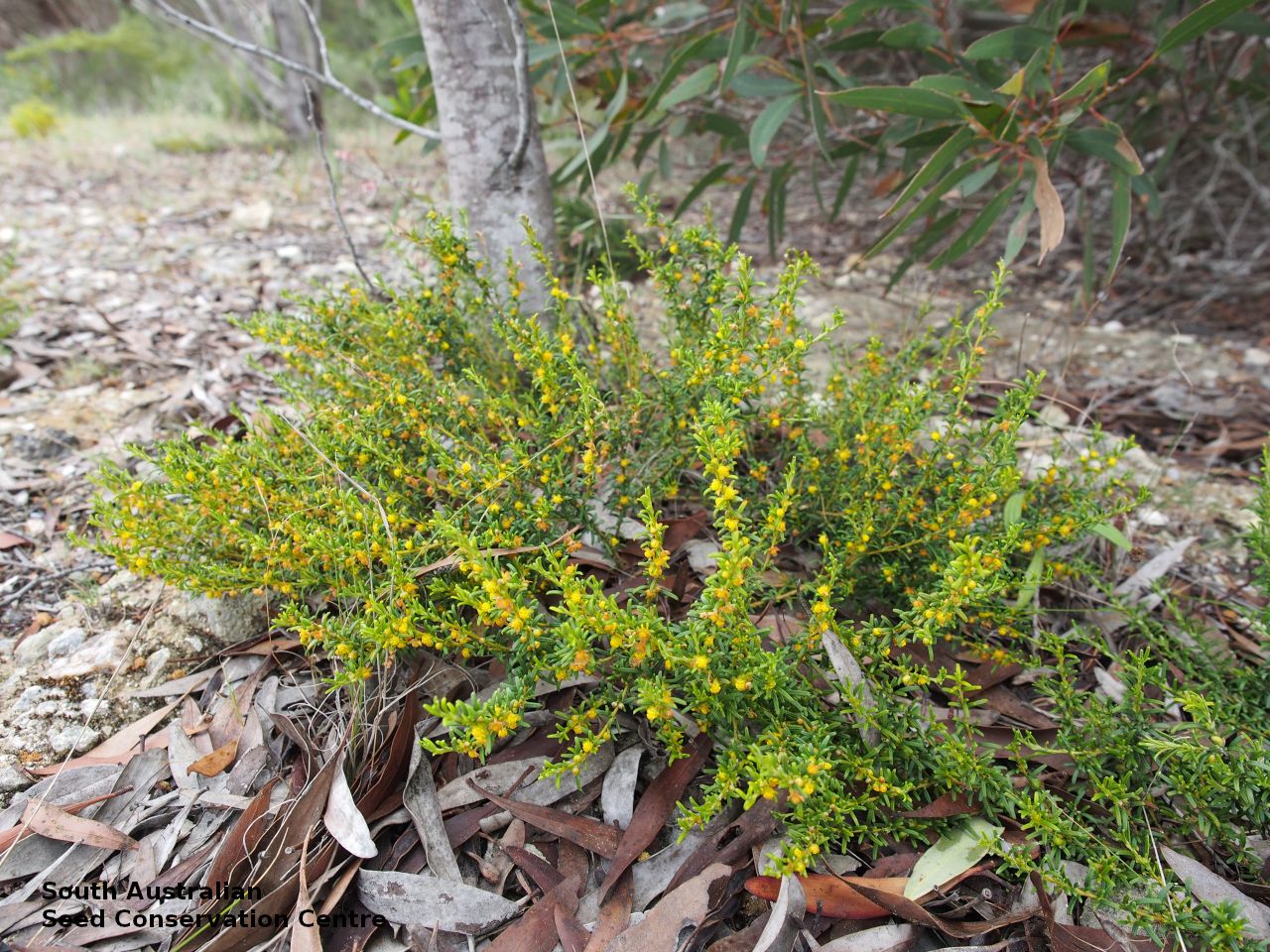
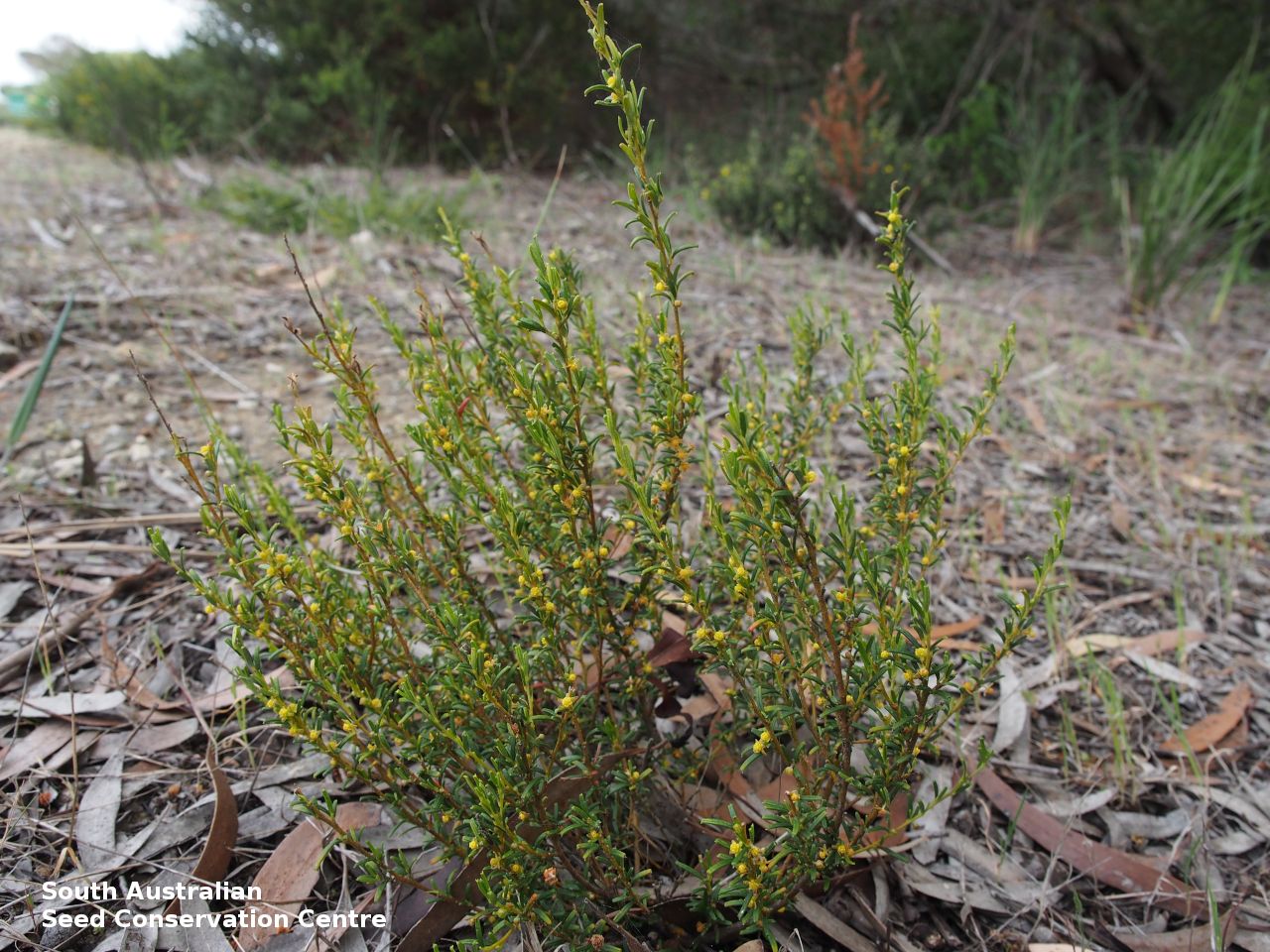
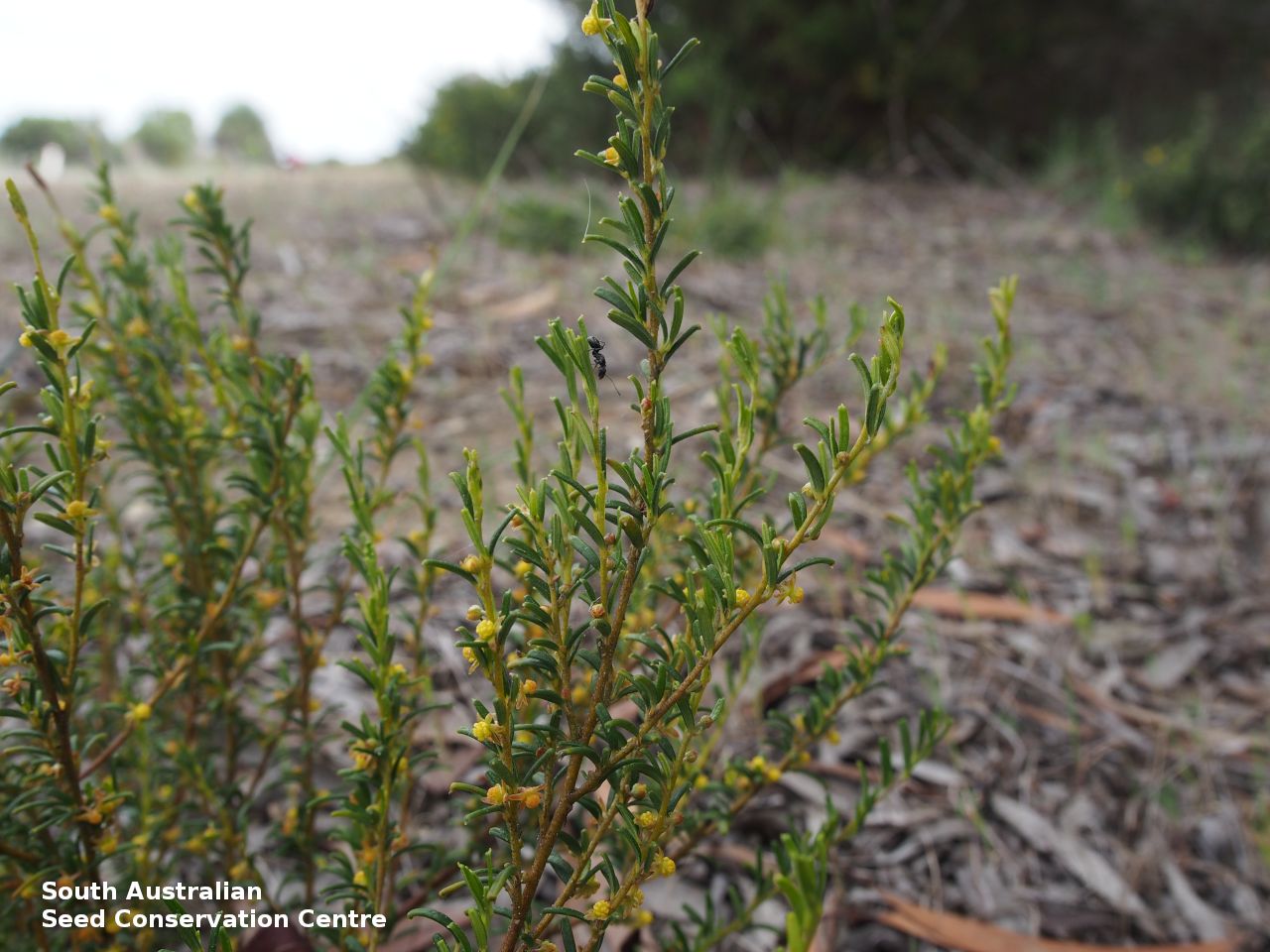
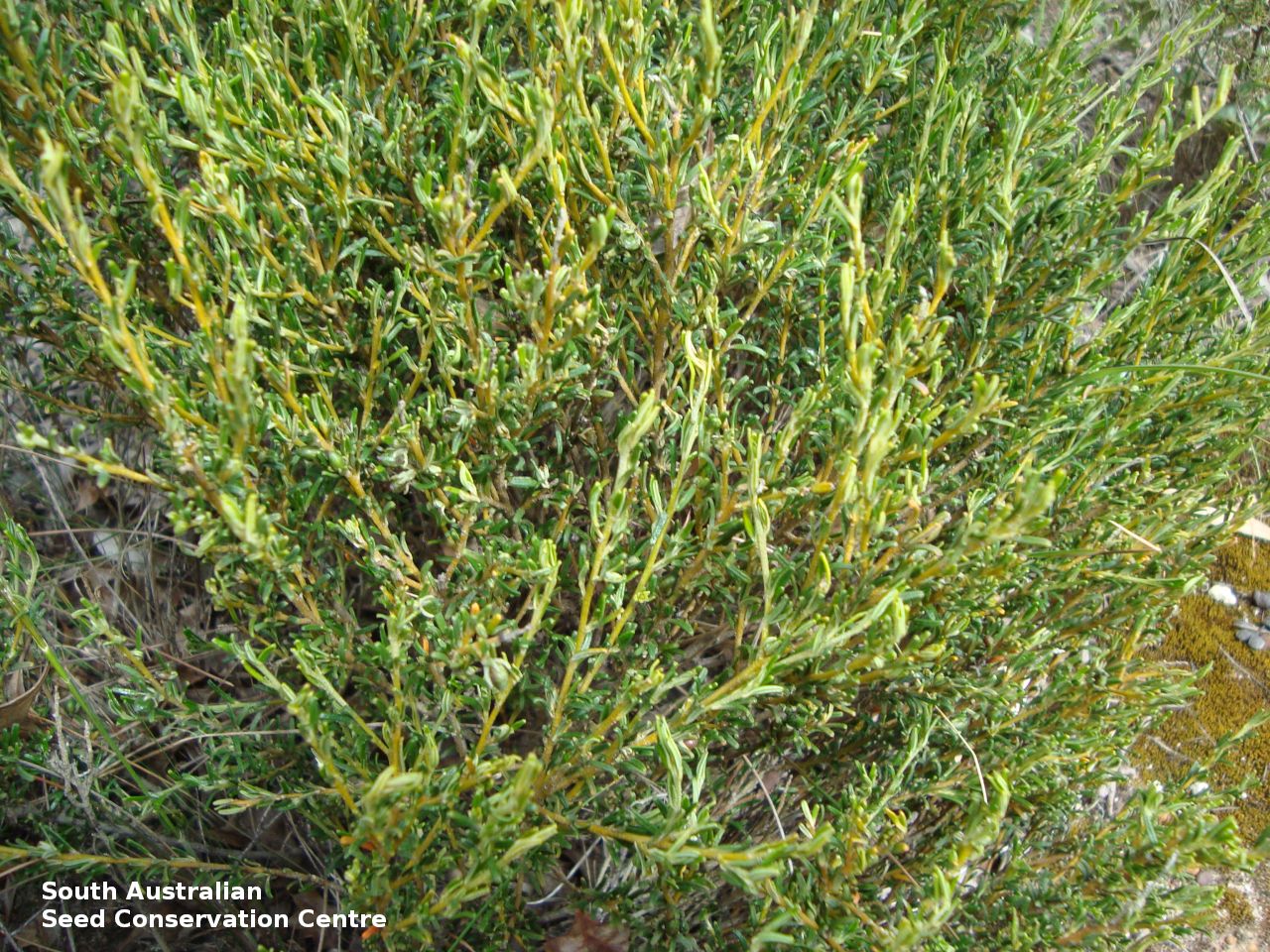
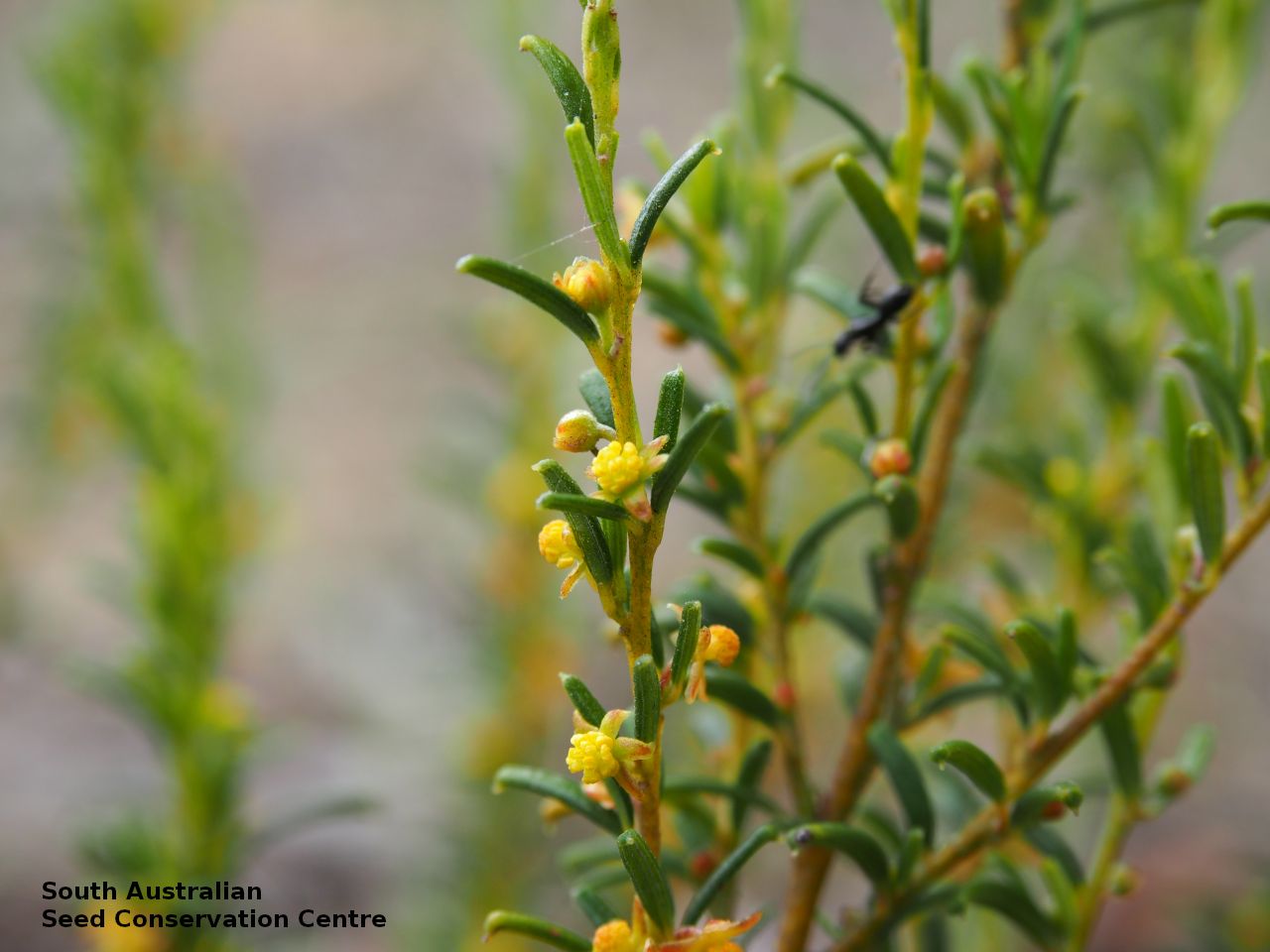
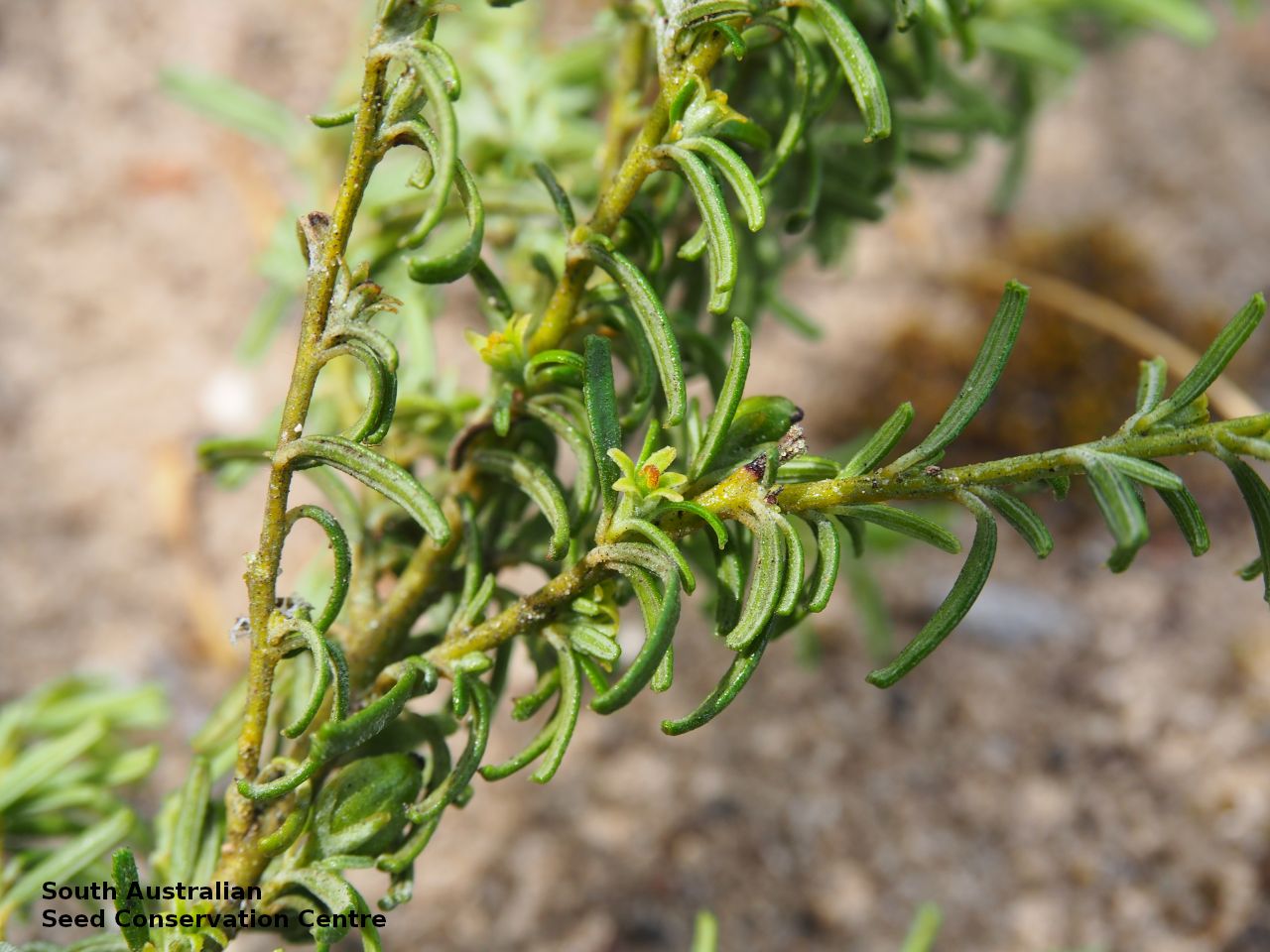
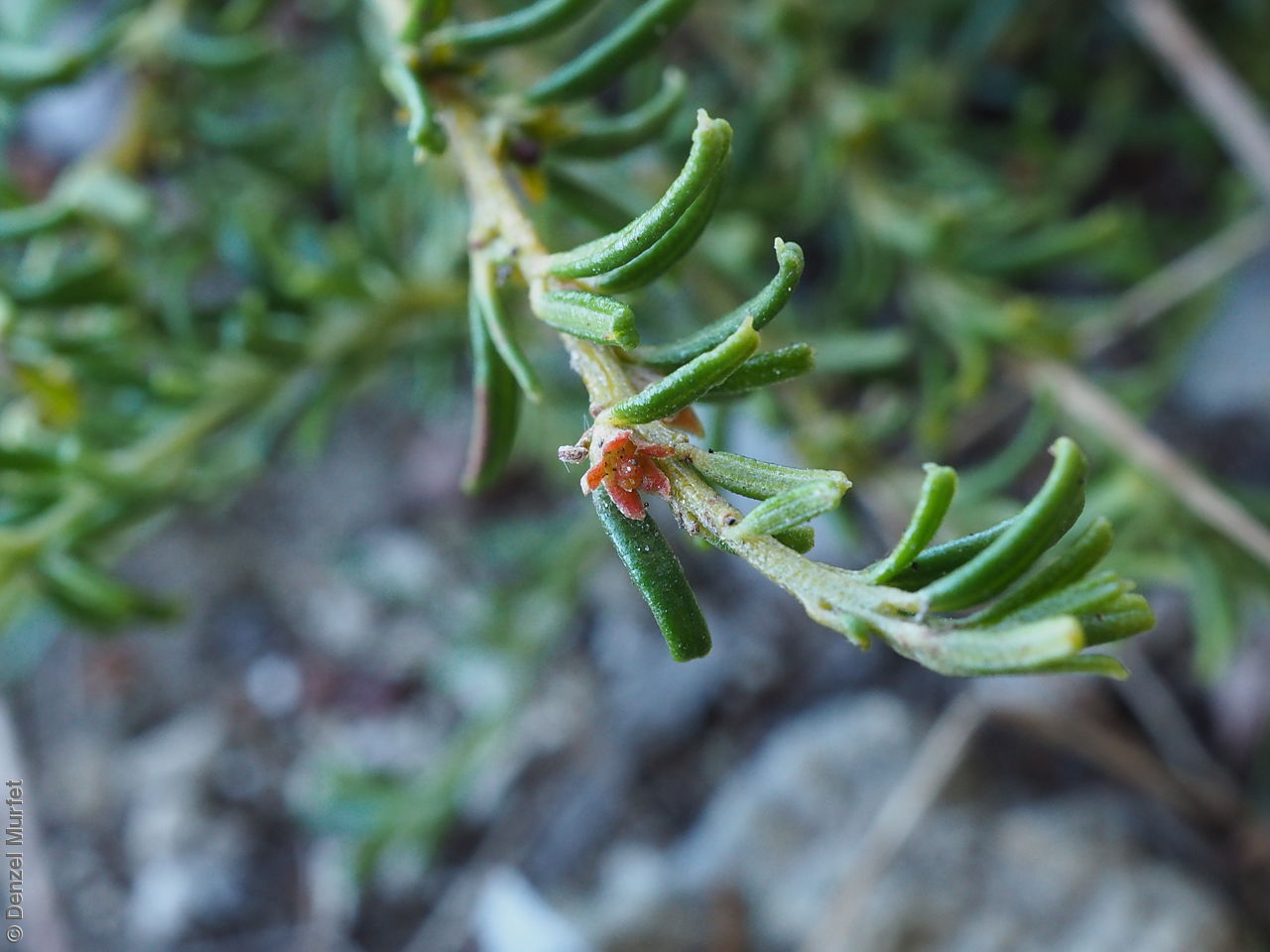
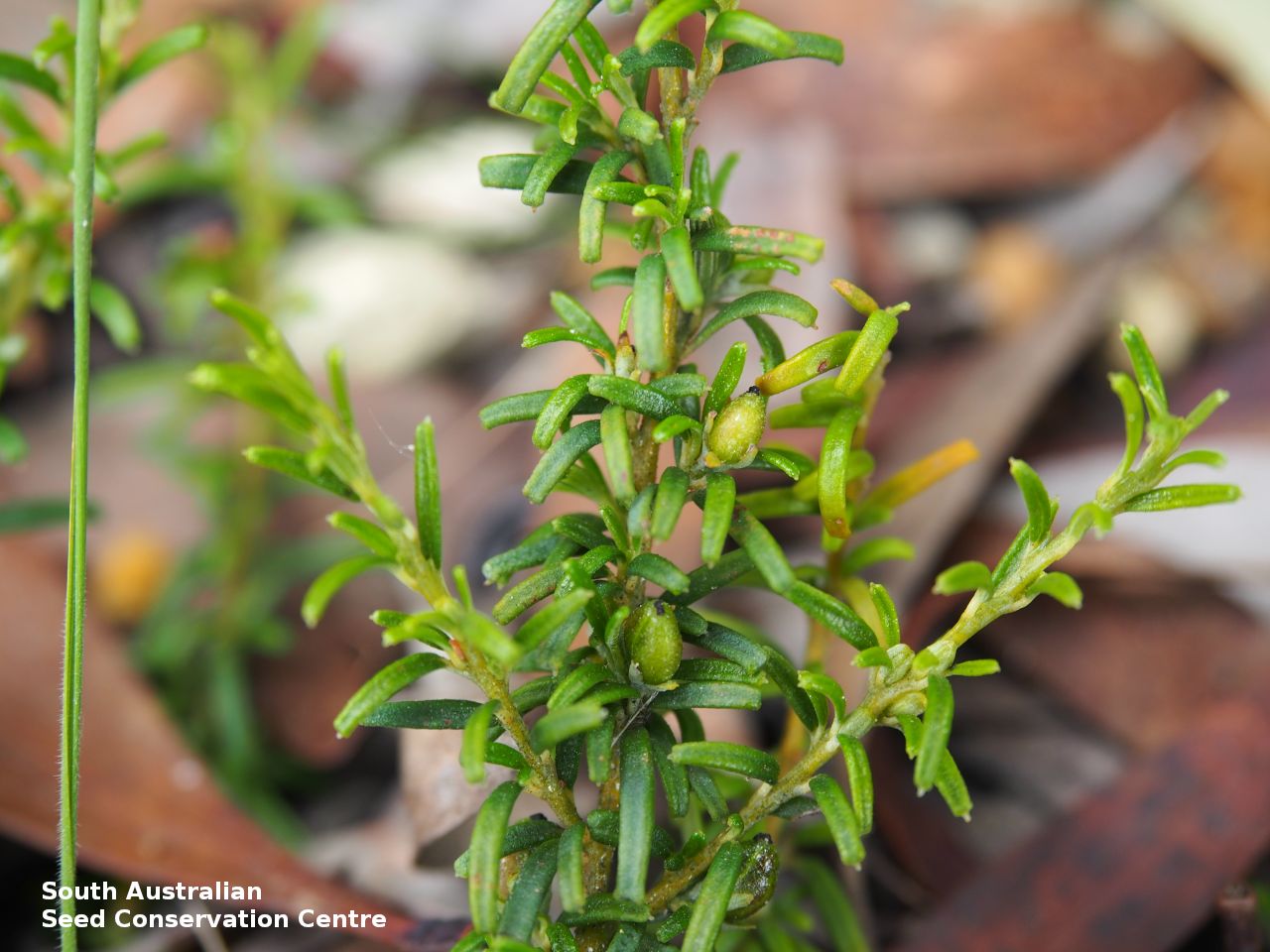
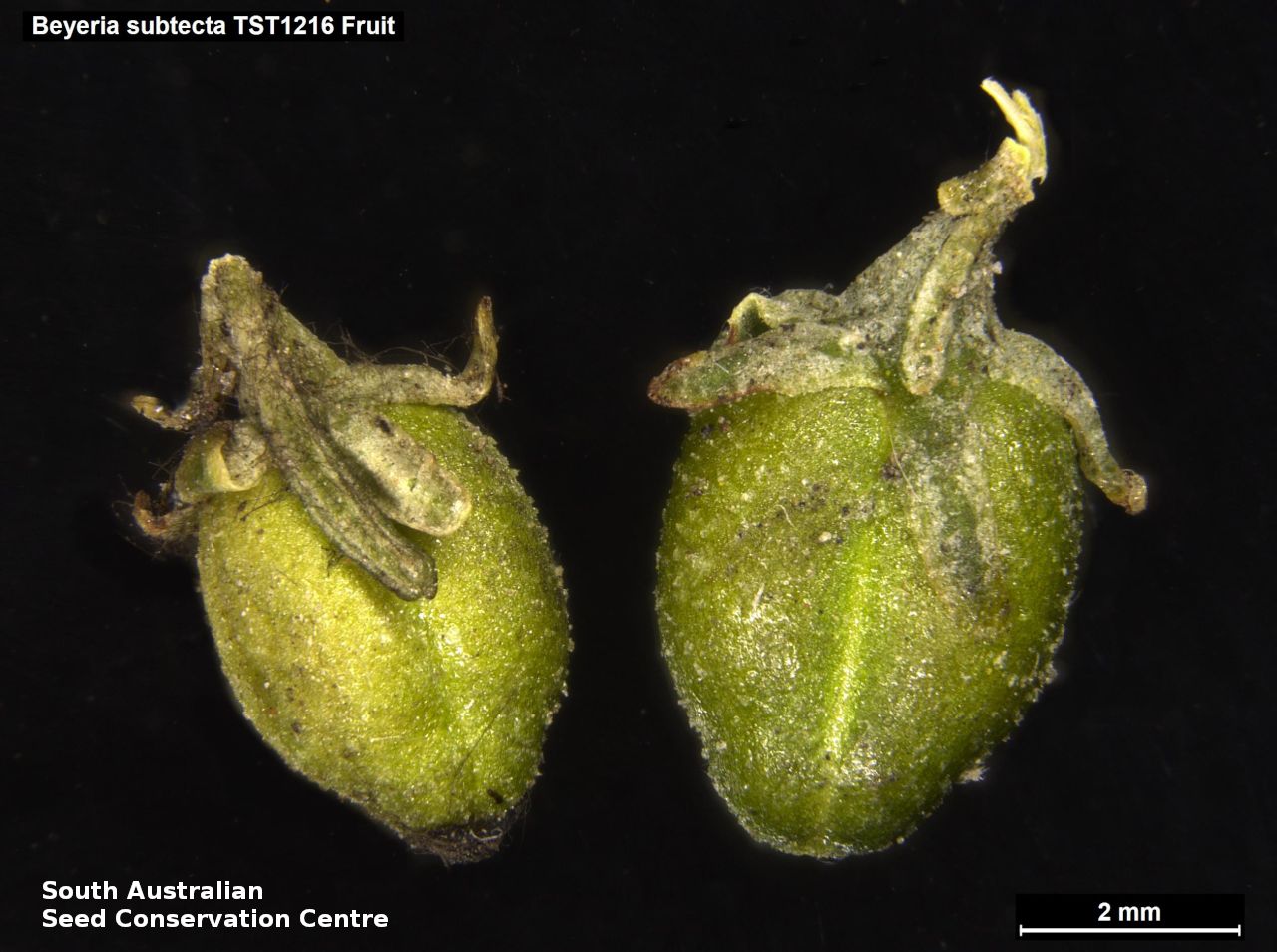
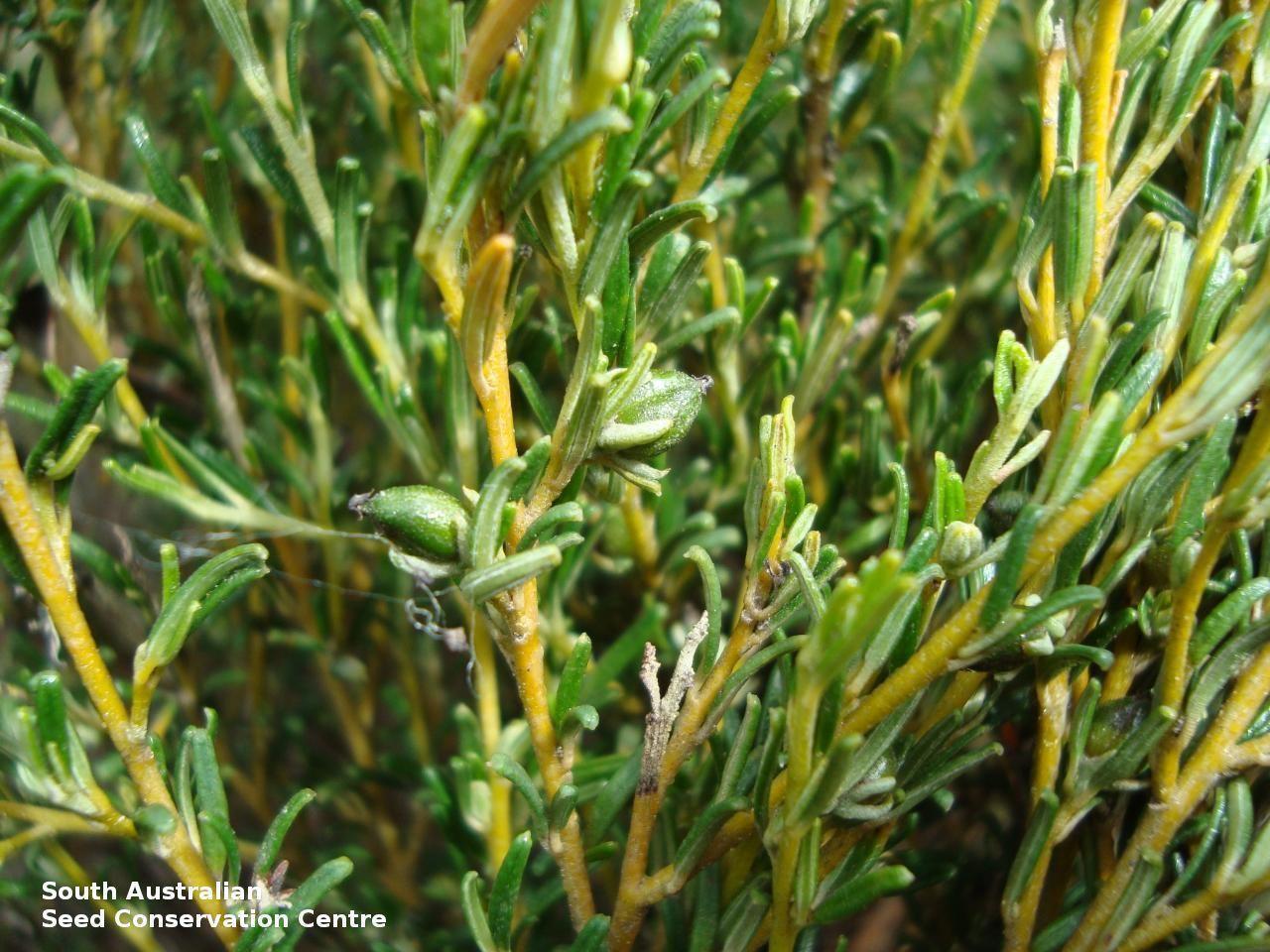
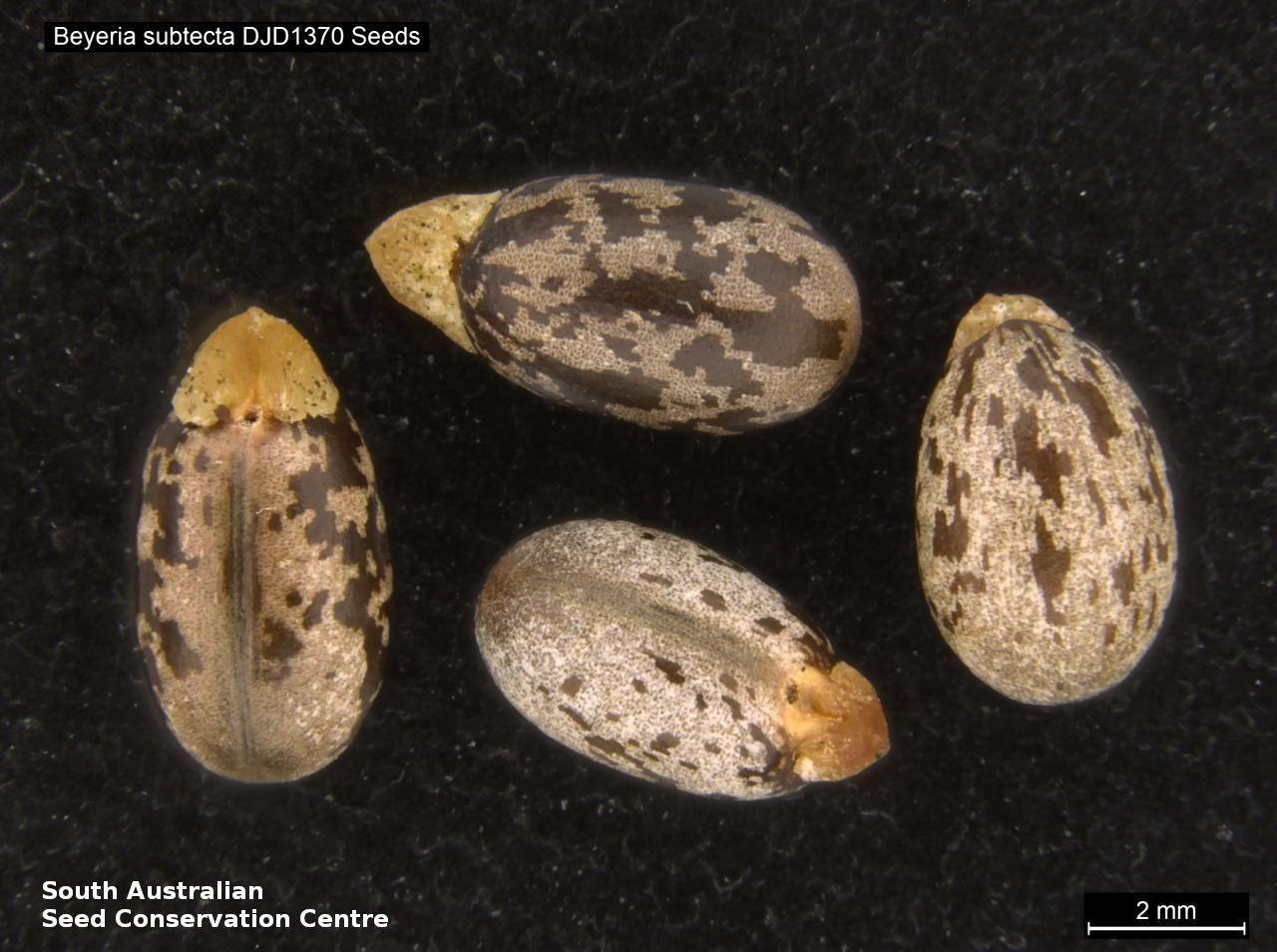
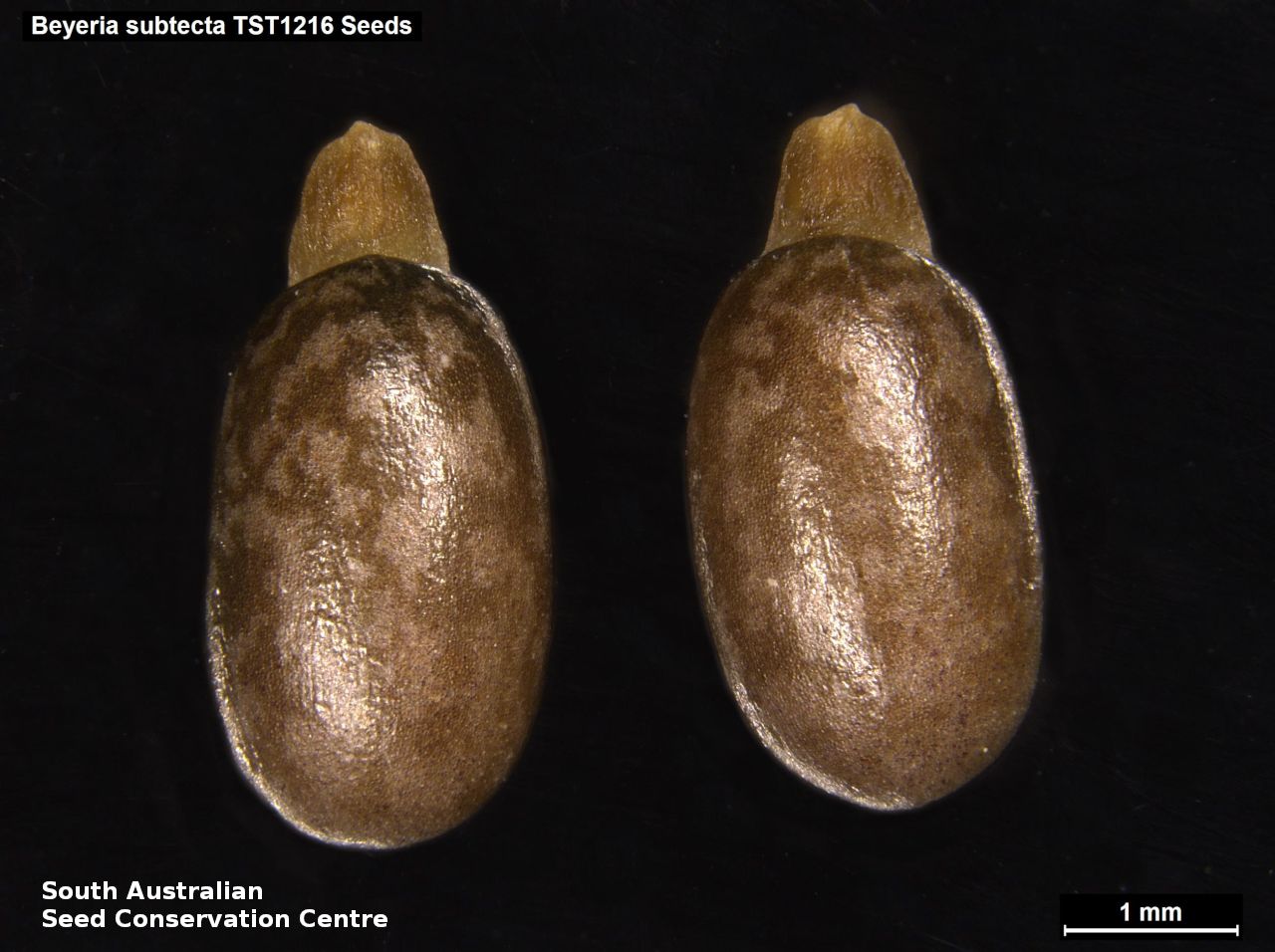
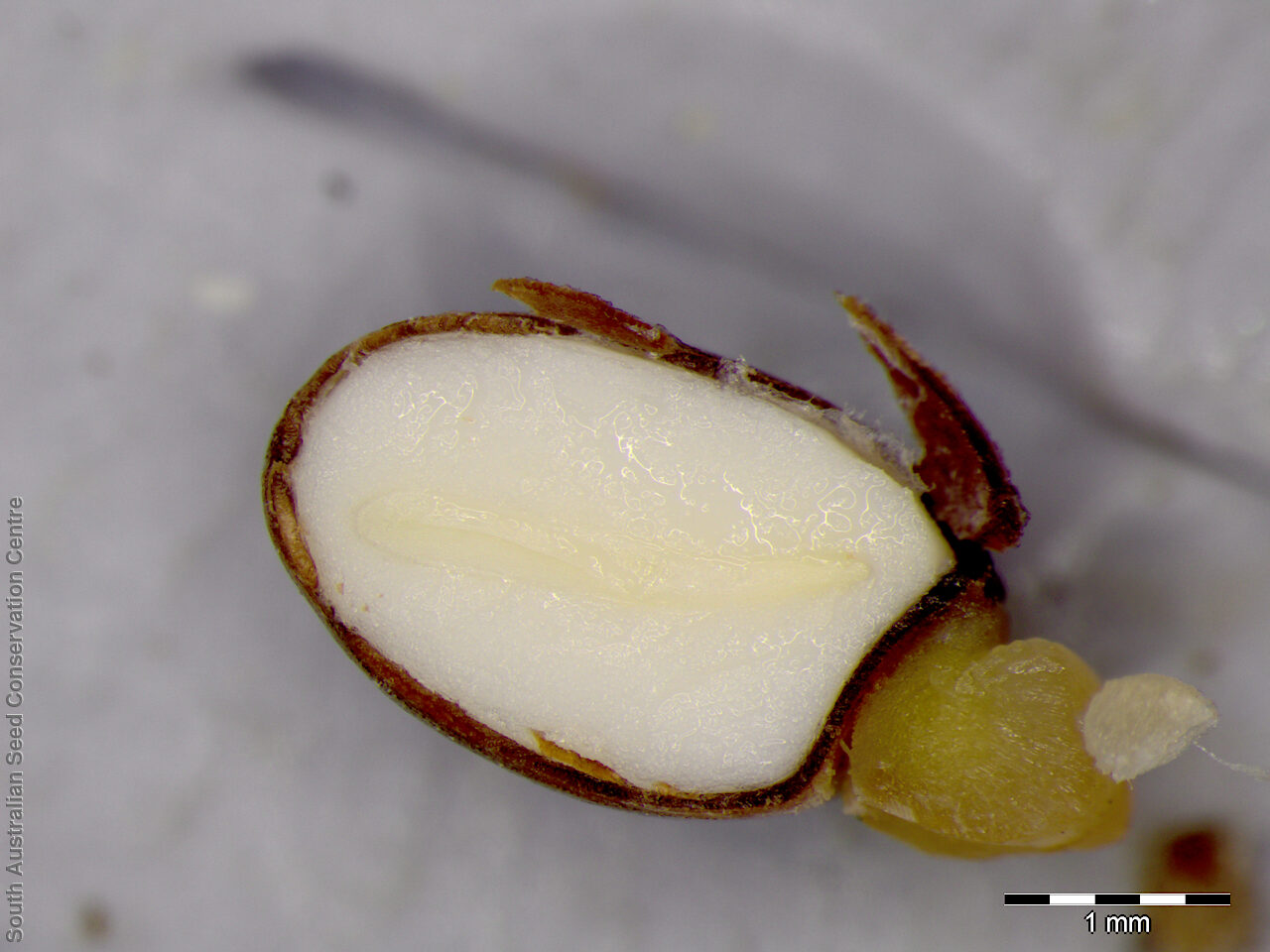
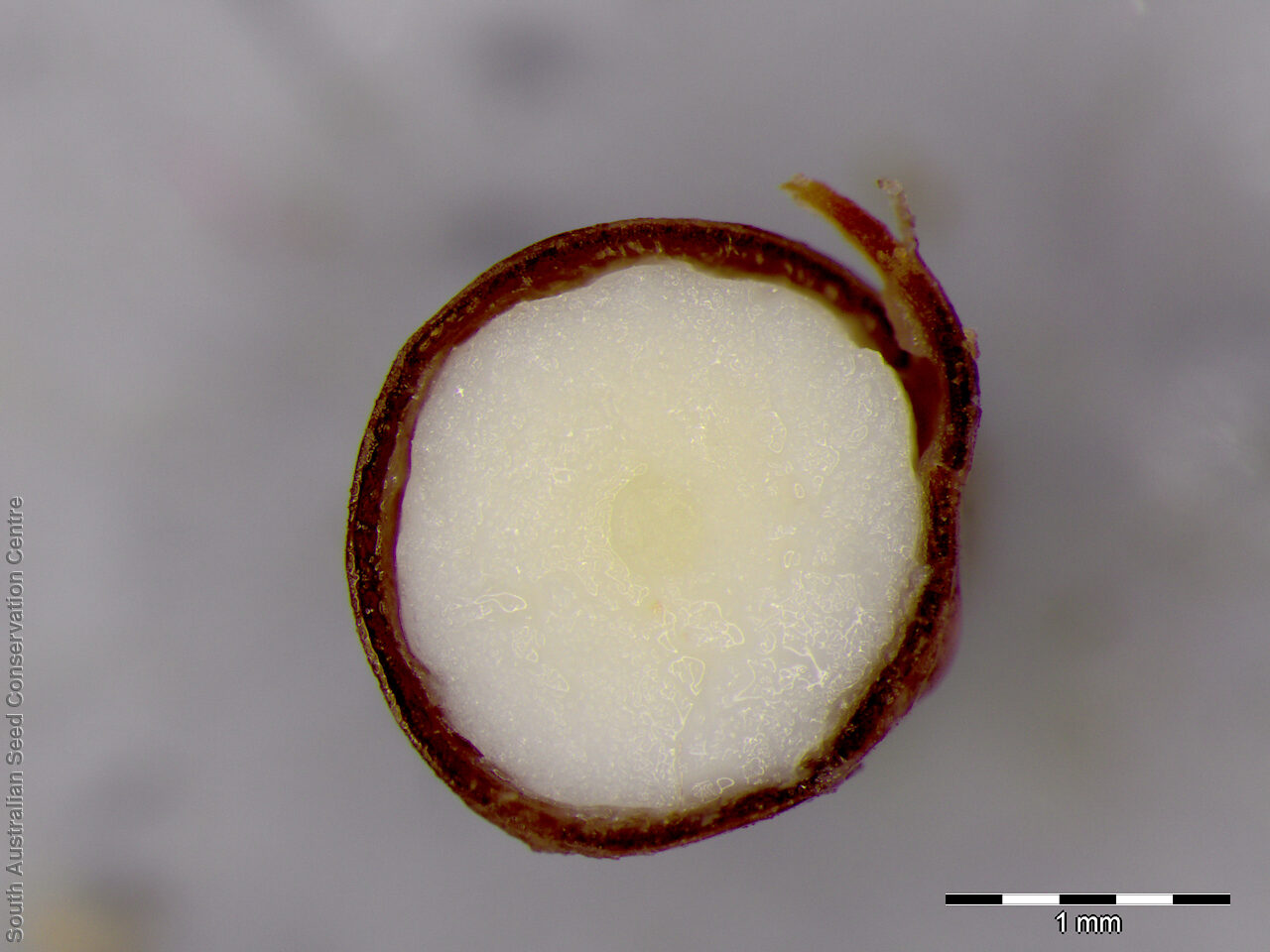

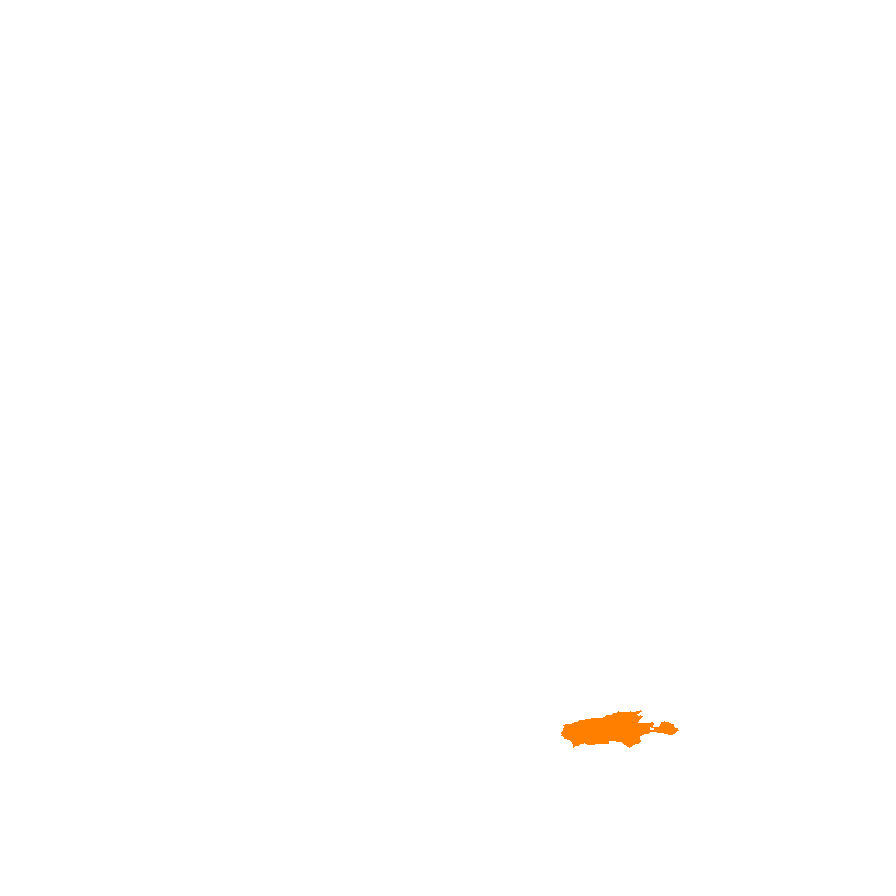
Botanical art
Etymology
Beyeria named after Rudolf Beyer (1852-1932), a Dutch cryptogamist. Subtecta from the Greek 'sub' a prefix meaning partially, almost or somewhat and 'tectum' meaning cover; possibly referring to the recurved margins of the leaves which conceal the narrow hairy surface on the underside.
Distribution and status
Endemic to South Australia and found only in a small area on the eastern side of Kangaroo Island, growing on laterite soils in mallee vegetation. Native. Very rare in South Australia.
Herbarium region: Kangaroo Island
NRM region: Kangaroo Island
AVH map: SA distribution map (external link)
Plant description
Sticky dioecious bush to 60 cm tall with slender terete ascending branchlets. Leaves narrow linear to 10 mm long and 1.6 mm wide, margins entire, recurved, upper surface dark-green, glabrous, underside with a narrow band of white appressed hairs and a distinctive mid-vein. Inflorescence axillary and/or terminal on short shoots with solitary flower. Male flowers yellow or white to light-green on slender peduncles, female flowers yellow-green on peduncles to 0.6 mm long. Flowering between June to September. Fruits are dark green ovoid capsule to 3.5 mm long and 2.8 mm wide, glabrous. Seeds are mottled brown ovoid to ellipical seed to 6 mm long and 4 mm wide, shiny, topped by yellow-brown fleshy aril. Seed embryo type is spatulate.
Seed collection and propagation
Collect seeds between November and March. Collect maturing capsules, that are fat, green and contain dark, hard seed.
Seed collections for three roadside populations on Kangaroo Island were made in 2016 with the support of the Australian Seed Bank partnership. Place the capsules in a tray and leave to dry for a week or two. Then gently rub the capsules with a rubber bung to dislodge the seeds. Use a sieves to separate the unwanted material. Store the seeds with a desiccant such as dried silica beads or dry rice, in an air tight container in a cool and dry place. Seed viability can be variable and seeds are prone to predation. From one collection, the seed viability was high, at 80%. This species has physiological dormancy and can be difficult to germinate. However, there was a high level of germination (80%) after treatment with hydrogen peroxide and gibberellic acid.
| Location | No. of seeds (weight grams) | Number of plants | Date collected | Collection number Collection location | Date stored | % Viability | Storage temperature |
|---|---|---|---|---|---|---|---|
| MSB | 1,460 (10.8 g) | 30+ | 12-Dec-2016 | JRG543 Kangaroo Island | 86% | ||
| BGA | 1,900 (13.25 g) | 70+ | 16-Nov-2015 | DJD3237 Kangaroo Island | 2-May-2017 | 70% | -18°C, -80°C |
| BGA | 430 (2.646 g) | 5 | 17-Jan-2017 | TST1216 Kangaroo Island | 1-Nov-2017 | 48% | -18°C |
| BGA | 2,100 (12.33 g) | 10-Nov-2008 | DJD1370 Kangaroo Island | 7-Jul-2022 | 80% | -18°C | |
| BGA | 180 (1.740 g) | 27-Dec-2021 | DJD4118 Kangaroo Island | 7-Jul-2022 | 86% | -18°C | |
| BGA | 705 (6.760 g) | 27-Dec-2021 | MJH76 Kangaroo Island | 7-Jul-2022 | 62% | -18°C |
Number of plants: This is the number of plants from which the seeds were collected.
Collection location: The Herbarium of South Australia's region name.
% Viability: Percentage of filled healthy seeds determined by a cut test or x-ray.